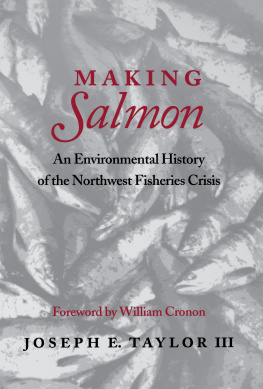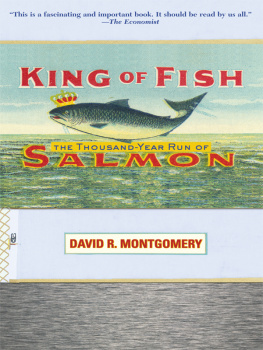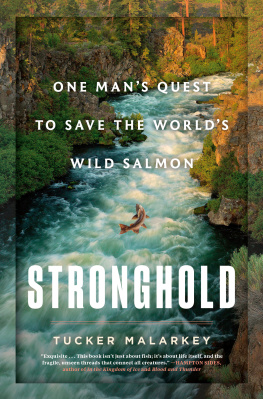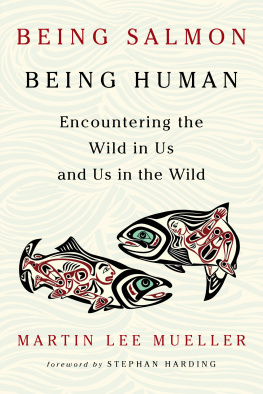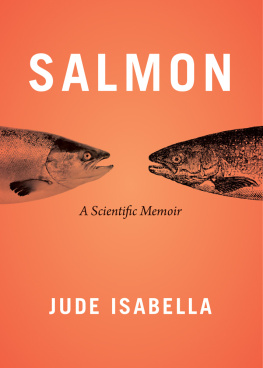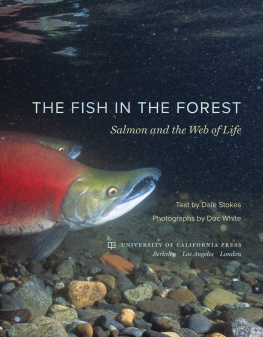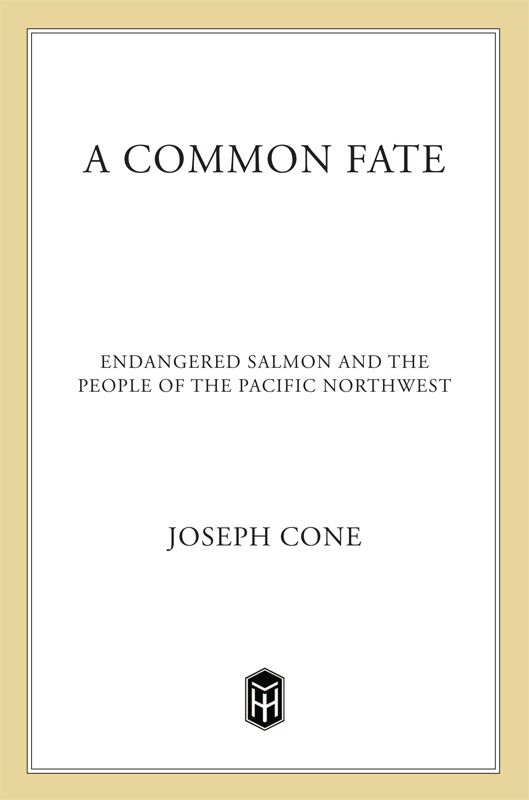Contents
Guide

The author and publisher have provided this e-book to you for your personal use only. You may not make this e-book publicly available in any way. Copyright infringement is against the law. If you believe the copy of this e-book you are reading infringes on the authors copyright, please notify the publisher at: us.macmillanusa.com/piracy.
C ONTENTS
For Adam and his generation
A CKNOWLEDGMENTS
I have not done a scientific study of it, but it seems customary to end acknowledgments with ones spouse. Id like to reverse that practice here and thank my wife, Tylar Merrill, for without her primary assistance this project could not have been completed. Exactly coincident with the writing of this book weve been raising a son from birth to age two. Anyone who has any experience of that event knows how it can easily take all of ones energy and interest. The continuing support Tylar has shown for my writing project within that bigger endeavor has been a constant affirmation of her careand of her resourcefulness.
Im indebted to many colleagues for their insights, advice, and encouragement. Chief among them are Bob Malouf and Sandy Ridlington, director and managing editor, respectively, of Oregon Sea Grant at Oregon State University. Both of them encouraged and supported the book in numerous ways from the beginning. Jim Larison, former director of communications with Oregon Sea Grant, and Bill Wick, former program director, also were important in getting the project started.
I appreciate the reviews of many of those who were sources for the book. In particular, I thank Jim Lichatowich, Michael Blumm, and Gordon Reeves for diligently reading and commenting on sizeable portions of the manuscript.
Naturally, any errors which remain are my responsibility entirely.
Friends and fellow writers John Russial, Glen Gibbons, and Richard Strickland helped sharpen my prose and my thinking; and for the insights that can come only from good conversation Im especially grateful to Janice Gotchall, Paul Conte, Marcia Brett, and David Bayles. Bill Merrill was, as always, a merry cornucopia of information and perspective.
Several writers and researchers who specialize in salmon history and biology generously shared resources and background material with me: Court Smith, Bill Pearcy, Chris Frissell, Dan Bottom, Janet Webster, Cleve Steward, Lori Bodi, Kai Lee, Doug Markle, and Irene Martin.
For her assistance I thank Becky Hiers, with the Confederated Tribes of the Umatilla Indian Reservation, and I value the time and attention given to me by tribal officials Antone Minthorn and Louie Dick. Russell Jim of the Yakama Indian Nation generously responded to my questions about certain Indian ceremonies.
Finally, I deeply appreciate the efforts of my agent, Bob Lescher, and of my editor, Jack Macrae, for keeping the Northwest, as a territory of hope, alive in New York City and helping to share it with the rest of the country.
one
D ENIAL AND E NGAGEMENT
If the courage is lacking now to take the steps necessary to sensible conservation, we shall have the losses and the hardships eventually anyway; with the difference that, if action is delayed, depletion will have progressed further and rehabilitation made just so much more difficult.
W ILLIS H. R ICH , T HE F UTURE OF THE C OLUMBIA R IVER S ALMON F ISHERIES , 1940
The wind came in gusts off the slate gray ocean, surging hard as if it would charge up into the mountains. It blew rain over Highway 101, dousing the sparse morning traffic of cars, log trucks, RVs, and one government-green sedan heading south out of Florence. Inside the sedan, Gordon Reeves reached over on the seat and, eyes fixed on the rainy highway, plucked another carrot stick out of a sandwich bag. Judiciously, he took a first small bite. He was thinking, and he liked to chew things up fine.
It was only 10:30, but this was lunchtime for Reeves, and the inside of his car was his fast-food place this morning, another busy one of a busy week. He had left home and gone to his office at 7:00 A.M. , then driven two hours, down the Oregon coast. He was spending more time alone in a car than he liked, but it was giving him a chance to think about what he was seeing in the forests of the Coast Range. What he was seeing worried him. Reeves, a fish researcher and ecologist with the Pacific Northwest Research Station of the U.S. Forest Service, had gotten himself what he considered an interesting, and quite likely controversial, assignment. He was evaluating how successful the Forest Service and the Bureau of Land Management were in their efforts to improve conditions for salmon in the federal forests of the Northwest.
To do the evaluation, he needed to investigate an enormous amount of country, not just the Coast Range but also parts of the Cascade Mountains in Oregon and Washington and the coastal mountains of northern California. This morning in March 1988 he had driven from Corvallis, in the valley east of the Coast Range, over the coast summit.
It had begun to rain as soon as Reeves started up into the coastal hills. In good years, the Pacific Ocean dumps huge quantities of rain and snow on the mountains of the Pacific Northwest. With enough rain and certain sorts of soils, the mountain slopes spawn a multitude of streams, draining the rain off and sending it back to the ocean. Rain was necessary for salmon. It was a comforting thought as Reeves peered beyond the windshield wiper.
But it wasnt just a matter of topography and climate, not just mountains, streams, and rain. The salmon also needed certain conditions in their living space, and over millions of years they had evolved to find those conditions in the mountain forests of the Northwest. Geography was destiny for the salmon, and that destiny was relatively secure as long as the streams, mountains, and forests changed only with the slow rhythm of geological time.
The problem, Reeves knew, was that the secure time was long gone. As he drove along the coast now, he thought about how things had changed in the forests in the last hundred years and especially in the last ten years, and about how those changes affected the salmon. And he chewed his carrot sticks.
Not far out of town, the roadside cafes and the shops that rent dune buggies petered out, and the highway slipped into a tree-lined route marked by turnoffs for the national recreation area and for parks and campgrounds. Places had melodious Indian names such as Siltcoos and Tahkenitch, but most of the Indians were long gone. This stretch of the Oregon coast was the sort people thought of when they considered it still mainly wild and unpopulated. They were right about the unpopulated part, at least relatively speaking. It was not Connecticut or Virginia. But wild? Reeves knew well that that was only relative, too.
As he passed Tahkenitch Lake, the clouds hung low on the forested hillsides, wreathing their way among the trees. He nodded his head as he watched the streaming clouds. He knew he wasnt likely to see much of that effect on the lower Smith River: not enough trees.
The turnoff for the Smith, a few miles farther south, was announced by a huge International Paper Company pulp mill, squatting on the banks of the estuary, its lights on in the pallid daylight. The mill sat not far from the spot where in 1828 a band of Indians had attacked the camp of the fur trader Jedediah Smith, one of the first white travelers through the area. All fifteen men in camp were killed, though Smith himself happened to be away. When he discovered the dead men, he fled north, through uncharted mountains crisscrossed by swollen rivers and bogs. Before he finally reached the outpost of the Hudsons Bay Company at Fort Vancouver, on the Columbia River, he had endured great hardships. That was the story people tended to know. What grievances the Indians had against the animal trappers had been forgotten.


